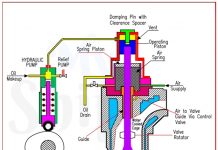
Q, Analyze the advantages and disadvantages of implementation of ISM code on ships. Would you recommend implementation of ISM code on your ship? Give convincing reasons for your recommendation.
Answer:-
The main objectives of the ISM code are as follows:
1) To provide for safe practices in ship operation and safe working environment.
2) To establish safeguards against all identifiable risks
3) To continuously improve safety management skills of personnel, including preparing for emergencies.
Accordingly, ISM is not about compliance with the aim of obtaining certification. Its advantages and disadvantages for implementation on board ships are as follows:
Advantages:
1) Ensures optimal improvement. Risks are managed effectively and performance is improved.
2) Enhances operational efficiencies and prevention of identifiable risks.
3) Reduces the likelihood of accidents or pollution incidents. Requirements include measures to establish safety procedures and prevent pollution.
4) Near miss reporting gains importance in the code. Hazardous occurrences are to be reported to company, investigated and prevention from future happening.
5) Compliance is in official language of company.
6) A vessel with ISM compliance and working SMS will have few incidents as all personnel are concerned about safety. This will lower insurance premiums and benefit ship owner.
7) All crew joining the ship feel responsible before joining as they are now legally responsible for their actions. Therefore crew are supported in actions that are morally correct and ethical.
8) Both the company and ship are responsible for the operation and maintenance of ship.
9) Helps in re-training and learning due to easy access to procedures.
10) There is always reference material (manuals, training booklets) available for those who want to learn.
11) Masters duties and overriding authority are clearly stated. Helps him in taking control of ship operations and crew in following orders.
Disadvantages:
1) ISM code and SMS lead to too much paperwork.
2) Procedure manuals are voluminous and difficult to refer and read.
3) Some procedures are irrelevant and not specific to the ship.
4) Sometimes only checklist are followed without actually carrying out the required task
5) The documentation may be too complicated.
6) Lack of guidance for implementation of code.
7) Non-uniform interpretation of the codes requirement.
8) The senior officers have become clerks and dedicate all their time and to paperwork to avoid detentions. Sometimes the task at hand is ignored.
9) Actual control and supervision by Master and Chief Engineer is missing as they are always busy in paperwork.
10) There is sometimes no guidance and support from senior officers as they sit on computers all day making reports and replying to messages.
11) SMS in working language of vessel. May not be understood by all crew.
12) Too many rules and regulations directed towards improperly trained personnel.
13) Proper training needs are rarely reported.
14) Lack of proper SMS review and monitoring and only superficial SMS evaluation.
15) Need good incentives and resources to be able to implement all requirements.
16) Involves a good amount of cost for meeting the requirements.
17) Support from company may not always be in favour of crew.
Recommendation for implementation of ISM code on my ship is definitely YES. Reasons for implementation are as follows:
1) A majority of P&I clubs and underwriters have made it a requirement for vessels to be compliant with the requirements of the ISM code. A non compliant owner cant operate in almost all the ports and terminals.
2) Implementation will lead to safety consciousness and better safety management skills.
3) Documentation and procedures will be available for almost all operations on board will make work environment safe and reduce chances of an accident or hazardous occurrences.
4) Standardisation of procedures can be done so that all crew will follow the exact same steps for all operations on board.
5) The system implemented on board be easily verifiable by authorities and help them determine seaworthiness of vessel.
6) Will improve training standards and thus safety culture.
7) Greater confidence on part of charterers and other clients.
8) Safer carriage of cargo and reduction in claims.
9) Reduction in no. of delays and detentions.
10) Favorable insurance premiums.
11) Higher degree of leadership and management commitment.
12) Quality management systems.



